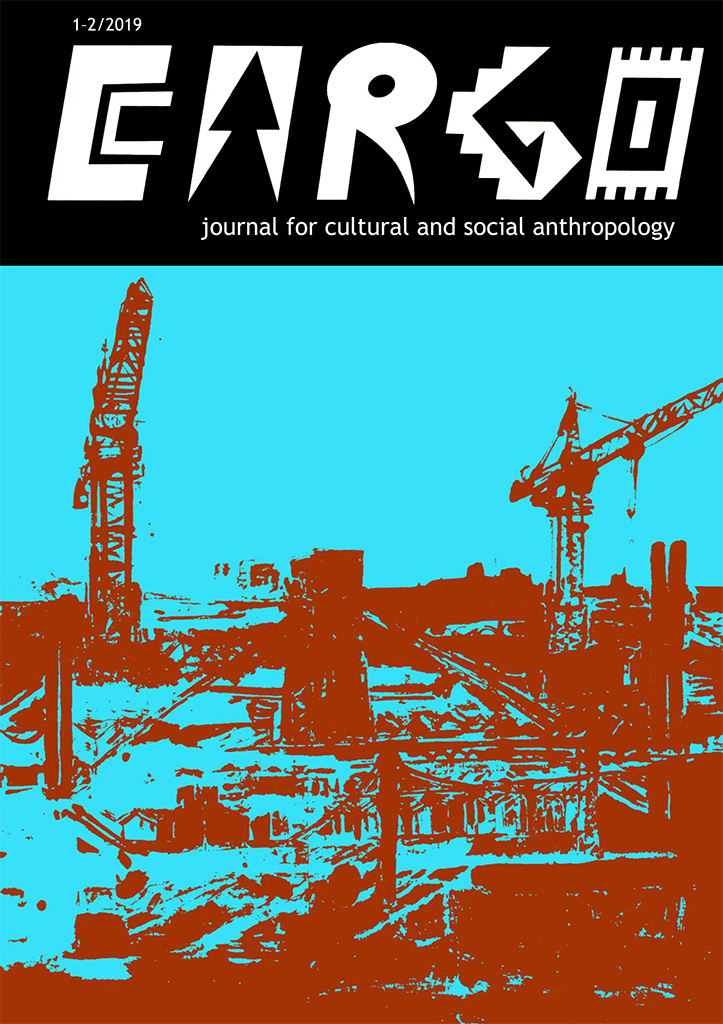Po stopách hipsterů: Současní dvacátnícia příběhy jejich stylu
Keywords:
hipster, subculture, style, sociology of fashionAbstract
The text seeks to explore the hipster phenomenon through a probe of the fashionable life of Prague twenty-somethings. It discusses the historical context of the emergence of the hipster and shows that it is not simple to define it as a subculture, as which it is often considered. With support in the work by Dick Hebdige, the text turns to the style and sensitive use of the combination of fashion elements, which the authors, however, understand rather as a way to the creation of distinct identities rather than a revolt against dominant culture. An analysis of the interviews shows that their participants, who were selected on the basis of a cloth bag, typically associated with hipsters, form their style in a similar way. They are looking for something typical for them and original among the fashion attributes; they are aware of their individual style and know their story well. The wearers of the canvas bags deal with the term hipster as such in a variety of ways, but they all take a clear view and have an idea of the label they are confronted with.
References
Bennett, Andy. 1999. „Subcultures or Neo-Tribes? Rethinking the Relationship between Youth, Style and Musical Taste.“ Sociology 33 (3): 599–617.
Clarke, Gary.1990[1981].„DefendingSki-Jumpers:ACritiqueoftheoriesofYouth Subcultures.“ In On Record: Rock, Pop and the Written Word, eds. Simon Frith a Andrew Goodwin, 68–80. London: Routledge.
Cowen, Deborah. 2006. „Hipster Urbanism.“ Relay, September/October: 22–23.
Cronin, James M., Mary B. McCarthy a Alan M. Collins. 2012. „Covert Distinction: How Hipsters Practice Food-Based Resistance Strategies in the Production of Identity.“ Consumption Markets & Culture 17 (1): 2–28.
Franzese, Alexis T. 2009. „Authenticity: Perspectives and Experiences.“ In Authenticity in Culture, Self, and Society, eds. Phillip Vannini a J. Patrick Williams, 87–102. Surrey: Ashgate.
Greif, Mark. 2010. „What Was the Hipster?“ New York Mag., October 24. Staženo z http://nymag.com/news/features/69129.
Hall, Stuart, et al. 2006. Resistance through Rituals: Youth Subcultures in Post-War Britain. New York: Routledge.
Hebdige, Dick. 1991. Subculture: The Meaning of Style. New York: Routledge.
Hill, Wes. 2015. „A Hipster History: Towards a Postcritical Aesthetic.“ Critical Studies in Fashion & Beauty 6 (1): 45–60.
Hipster v rohu. 2015. Česká televize. Staženo z http://www.ceskatelevize.cz/ ivysilani/11242771540-studentsky-maraton- 2015/21556222025/obsah/414123 -hipster-v-rohu.
Jenks, Chris. 2005. Subculture: The Fragmentation of the Social. Thousand Oaks: Sage.
Klein, Naomi. 2009. No Logo: Taking Aim at the Brand Bullies. New York: Picador.
Kolářová, Marta, a Anna Oravcová. 2011. Revolta stylem: Hudební subkultury mládeže v České Republice. Praha: SLON.
Maly, Ico, a Piia Varis. 2016. „The 21st-Century Hipster: On Micro-Populations in Times of Superdiversity.“ European Journal of Cultural Studies 19 (6): 637–653.
Mavruk, Cihan K., a Julian Weller. 2017. Paradoxical Consumption Practices and Creative Identity Work in Consumption Styles The Concept of Reflexive Bricolage. LUP Student Papers. Department of Business Administration, Lund University. Staženo z http://lup.lub.lu.se/student-papers/record/8921596.
Michael, Janna. 2013. „It’s Really not Hip to be a Hipster: Negotiating Trends and Authenticity in the Cultural Field.“ Journal of Consumer Culture 15 (2): 163–182. Muggleton, David, a Rupert Weinzierl, eds. 2003. The Post-Subcultures Reader. Oxford: Berg. Online Etymology Dictionary. Staženo z http://www.etymonline.com/index.php.
Redhead, Steve. 1997. From Subcultures to Clubcultures: An Introduction to Popular Cultural Studies. Oxford: Blackwell.
Schiermer, Bjřrn. 2014. „Late-Modern Hipsters: New Tendencies in Popular Culture.“ Acta Sociologica 57 (2): 167–181.
Singh, Armadeep. 2000. „Live, Streaming Subculture.“ Springerin 3: 17.
Slobodian, Quinn, a Michelle Sterling. 2013. „Sacking Berlin: How Hipsters, Expats, Yummies, and Smartphones Ruined a City.“ The Baffler 23: 138–146.
Thornton,Sarah.1995. Club Cultures: Music, Media Subcultural Capital.Cambridge: Polity Press.
Weinzierl, Rupert. 2000. Fight the Power: A Secret History of Pop and the Formation of New Substreams. Vienna: Passagen-Verlag.
Winge, Theresa M. 2003. „Constructing ,Neo-Tribal‘ Identities through Dress: Modern Primitives and Body Modifications.“ In e Post-Subcultures Reader, eds.
David Muggleton a Rupert Weinzierl, 119–132. Oxford: Berg.


